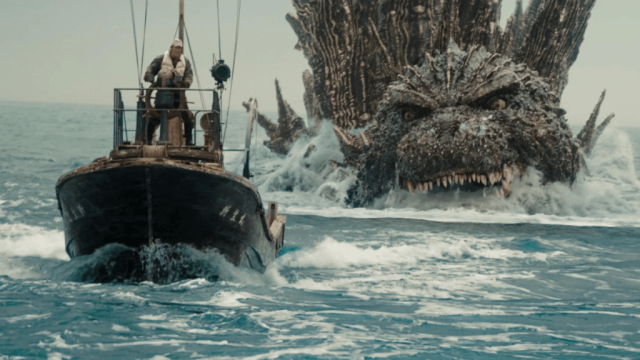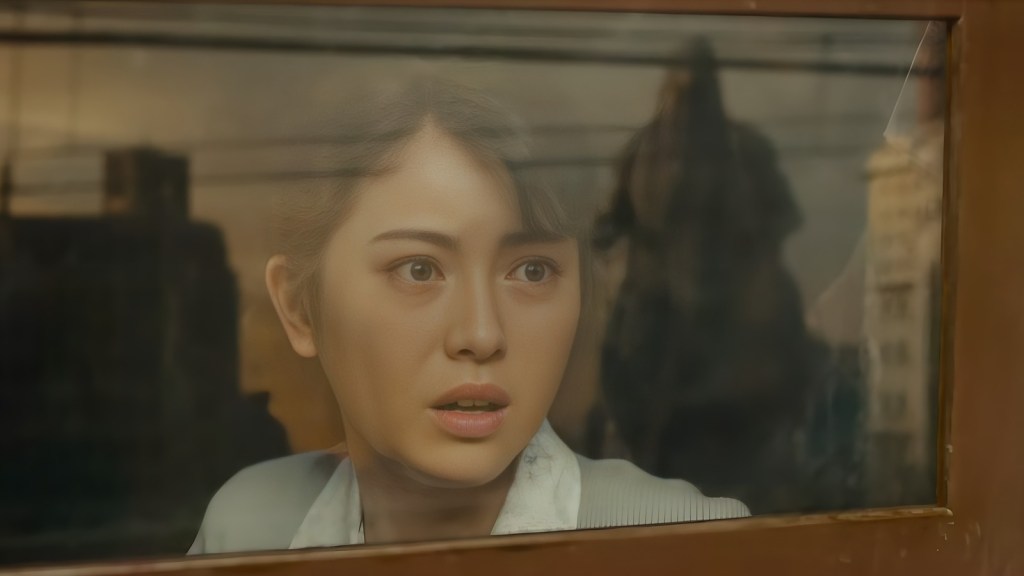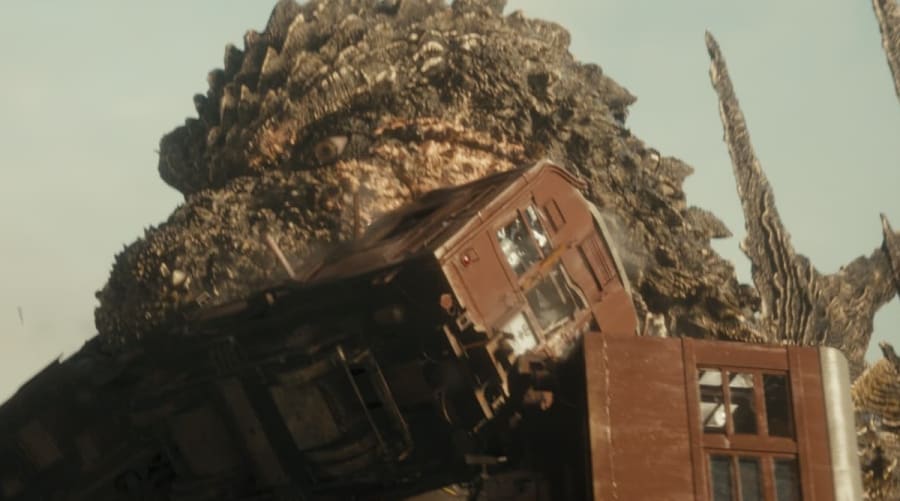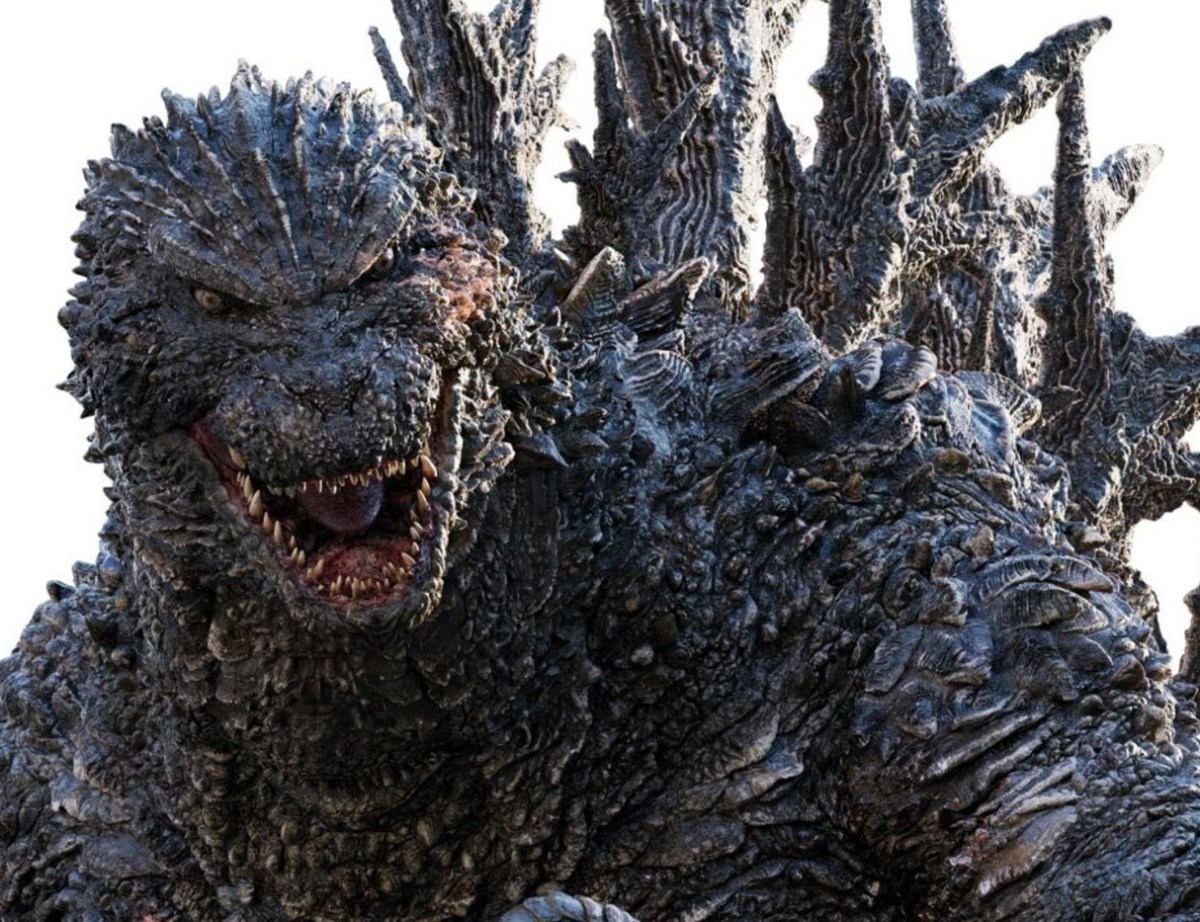Godzilla Minus One is the 37th film in the Godzilla franchise – and if you’re wondering whether you need to see all 36 predecessors before experiencing this one, I can happily say that you don’t.
This will probably annoy some Kaiju-heads, but Godzilla Minus One is my first foray back into Godzilla’s universe since the 1998 version with Matthew Broderick, which was my first and only Godzilla film viewing. Boo, hiss, I know. The tie-in KFC kids meal toys were dope, though. I used to scare my sister with my rubbery Godzilla hand puppet whenever she was ticking me off (which was often). But enough about little monsters – I have to talk about the big one.
In Godzilla Minus One, the Godzilla myth goes back to its poignant roots by setting the film in post-war Japan, in which a tired, impoverished nation is still reeling from the fallout of horrific nuclear bombings. A WWII fighter pilot named Kōichi Shikishima (Ryunosuke Kamiki) is feeling regret at abandoning his duty as a kamikaze; choosing to run and survive instead of suiciding for his country. As his survivor’s guilt grows into a deep, paranoid depression, so too grows the mutant lizard Godzilla.
Is it me? Am I the drama?
While the people of Japan are busy rebuilding their country, the prehistoric Godzilla emerges from a deep slumber somewhere on the ocean floor, having too been disturbed by radiation from nuclear bombs (especially the disastrous Castle Bravo/Lucky Dragon 5 incident at Bikini Atoll). He’s pissed at humanity, as you well would be. There’s a nice hook here, too: the longer Godzilla is ignored and dealt with inadequately, the stronger and bigger he gets, making him the perfect metaphor for both individual and collective survivor’s guilt.
It’s no secret that Godzilla was always intended as a metaphor for nuclear war, whether that be the bombs that fell on Hiroshima and Nagasaki, or just a metaphor for the ‘monstrous’ US military in general. All of these core themes of the monster are referenced in Minus One, but it interestingly leans inward and attempts to grapple with Japan’s national shame over its casual treatment of life in WWII.
Miyazaki’s 1992 film Porco Rosso comes to mind. In the animated film, an Italian fighter pilot is the only of his squadron to survive a WWI air battle, and his overwhelming survivor’s guilt manifests as him physically turning into a pig. Like Minus One, it turns the lens on the Japanese people and their feelings towards their own government. But as interesting as a kamikaze pilot turning into Godzilla would have been, director Takashi Yamazaki doesn’t mess with the lore in Minus One. There’ll be no childlike whimsy here!
The adherance to pre-established lore may excite long-time Godzilla fans, but in many ways it becomes detrimental to the film. Godzilla’s design for example, harkening back to the 50s, is iconic and instantly recognisable, but it’s also a little goofy. Largely reptilian in his overall aesthetic, Minus One‘s Godzilla also has a weird puppy-dog mouth and a rather mammalian chest (what use would he have for overly define breasts? Don’t answer that, please). That being said though, I was instantly hyped-up when G-Zills activated his heat ray, causing the spikes on his back to jut out like artillery weapons and glow bright blue. When something works, why change it?

We’ll never go in the water again
Minus One wears its inspirations on its sleeve, in particular the great Spielberg thriller, Jaws. Looking for a job after the war, our pilot Shikishima joins a ragtag group of men on a tiny wooden fishing boat commissioned to clean up sea mines. While de-activating the mines, their guns naturally attract the attention of Godzilla. As the beast chases them through the water, the men desperately fire on it with increasing fervor, and eventually explode a mine inside its mouth … which does nothing. To their dismay, Godzilla can regenerate his damaged flesh in a second. I bet they wished they had a bigger boat.
The Spielberg presence continues to be felt throughout the film’s B plot, which is all about Shikishima’s found family. A chance encounter with a woman running from the law in the city market sees Shikishima befriending, and eventually living with, Noriko Ōishi (Minami Hamabe), a woman of about his age who has decided to adopt an abandoned baby that she found on the streets. The gently growing acceptance between the three of them is a lovely counterpoint to the destructive guilt metaphor that’s quite literally crushing the city around them.

This underlying love story of sorts is also the perfect grounding device for a film that could so easily become shlocky and bombastic if it focused too much on the kaiju. I know the kaiju is like, the focal point of any Godzilla film, but if it was just Godzilla stomping around for two and a half hours with naught but the sound of machine guns firing at him, surely you’d get bored very quickly.
A giant beast deserves a giant screen
Overall, Godzilla Minus One is a nicely-shot action flick that’s quite thrilling to see on the big screen. It certainly deserves a viewing at IMAX with a large popcorn (BYO rubber puppet). And if anything, it’s made me a Godzilla fan who desperately wants to see the other films.
One final thought: I do not know what the next Godzilla film will be – and of course there will be more – but I’m personally hoping for Godzilla Eats Oppenheimer.

Actors:
Ryunosuke Kamiki , Minami Hamabe
Director:
Takashi Yamazaki
Format: Movie
Country: Japan
Release: 01 December 2023





